Industrial machines, parts, and components are subjected to everyday wear, whether mechanical, abrasive, or corrosive. To increase productivity and efficiency and reduce costs and the need for replacement parts, manufacturers turn to hardfacing welding.
Hardfacing is a metalworking process where thick coatings of hard, wear-resistant materials are applied on a worn or new component surface.
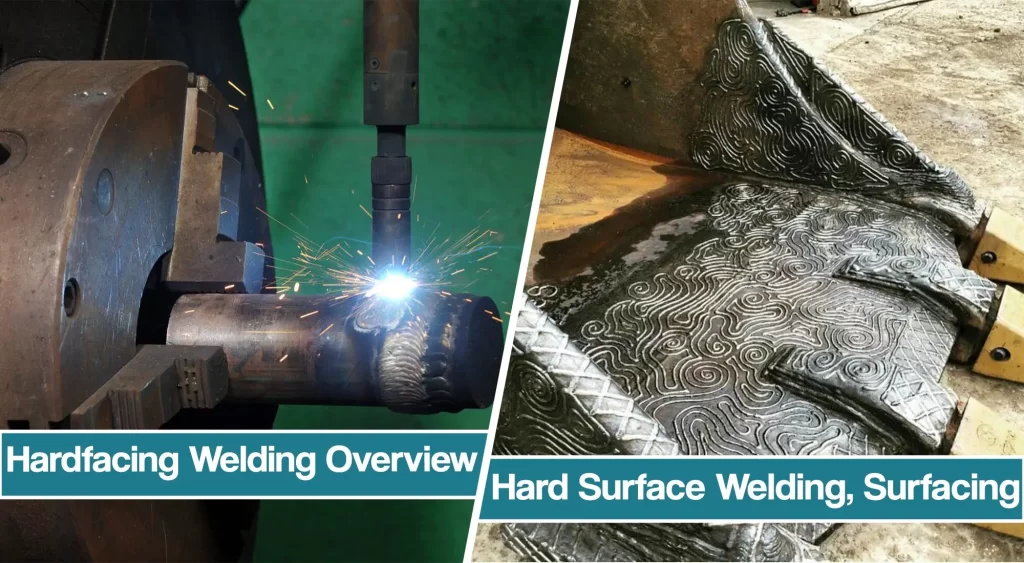
Hardfacing welding can be done using many different welding processes, such as shielded metal arc welding, gas metal arc welding, or gas tungsten arc welding.
In this article, we will explain hardfacing welding properties, types, and applications.
What Is Hardfacing or Hard Surface Welding?
Hardfacing is used to deposit very thick (1 to 10mm) dense layers of wear-resistant material with high bond strength on a worn or new component surface that is subject to wear. As a result, the parent metal gets an increased resistance to wear, whether it is corrosion, abrasion, friction, etc.
The primary purpose of hardfacing is to extend and lengthen the life of a part, some extemetaes are that it can extend the life of a part up to two years and recently, hardfacing was able to extend up to 300% of the lifespan of the components.
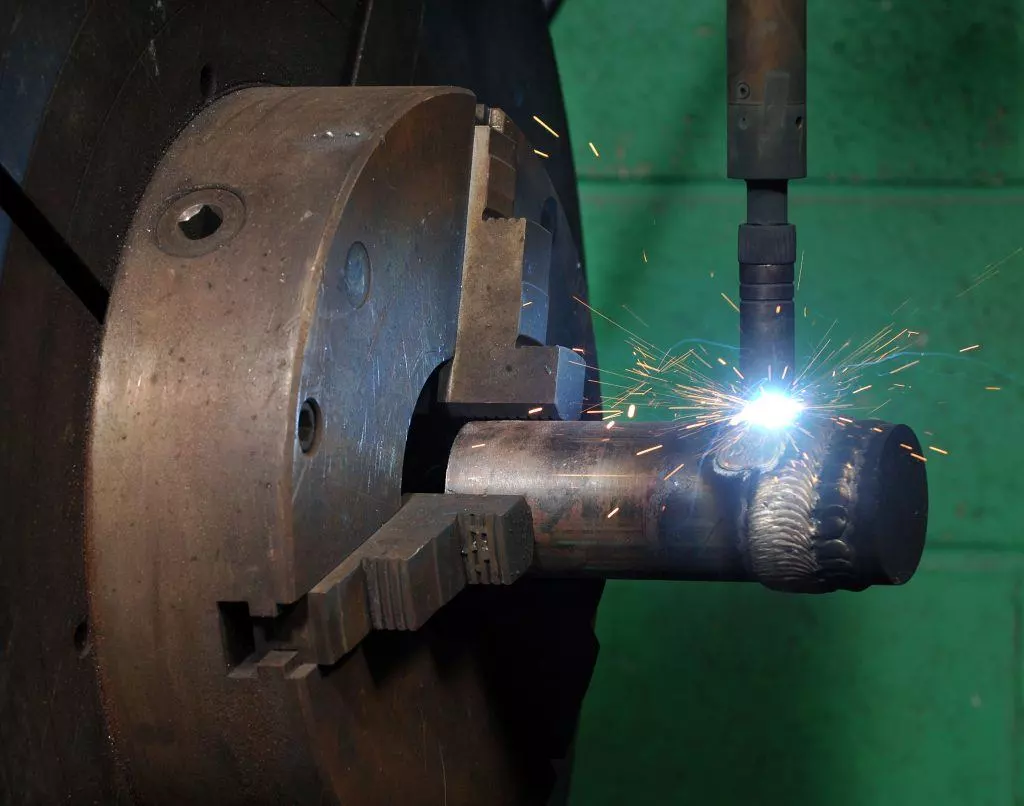
There are several similar processes, and hardfacing can sometimes be referred to as hard surfacing, surface welding, and cladding. While these can all represent a single process, there are often some differences, which we will explain further in the text.
More often than not, low-alloyed and carbon steels are the base metals you can hardface. However, it doesn’t end there, as you can hard face a wide variety of weld metal such as:
- Copper-Based Alloys
- Cast Irons
- Stainless Steels
- Carbon and Alloy Steels
- Nickel-Based Alloys
- Manganese Steels
Hardfacing Alloys
Before you apply any hardfacing welding methods, you will have to identify the base metal. To help you understand the basics, hardfacing alloys can be categorized into four groups:
- Martensitic alloys include all hardenable steels with Rockwell hardness from 20 to 65 HRC. As a result, these offer good metal-to-metal and abrasive resistance. They also can withstand impact, and similar to tool steel, martensitic alloys harden upon cooling. Materials with lower hardness are usually used to create a build-up prior to hardfacing or to restore dimension, while harder alloys increase abrasion resistance.
- Austenitic alloys include work-hardening manganese steels and stainless steels. Austenitic manganese steel is commonly used within crushers, railroad track frogs and crossings, and shovel teeth. Stainless steels are good for corrosion resistance, but all alloys offer good impact properties and moderate abrasion resistance.
- Metal carbide families and soft austenitic matrix alloys contain large amounts of metal carbides in a softer matrix. As a result, they are suitable for severe abrasion applications. Chromium carbide alloy is closer to a cast iron or white iron, but it can contain additional amounts of niobium, vanadium, and other elements.
- Metal carbide alloys in the martensitic matrix are essentially tool steel with a hardness in the range of 45 HRC to 60 HRC. These alloys contain additions of niobium, vanadium, molybdenum, or titanium. With proper procedures, they can usually be applied without stress cracks.
Hardfacing Methods
First, you should know that hardfacing isn’t a specific welding process. On the contrary, hardfacing welding utilizes one of the standard arc welding processes. Most commonly, welders can choose:
- (OFW) – Oxy-Fuel Welding or Oxyacetylene Welding
- (LW, LBW) Laser Welding
- Spray Fuse Welding
- (ESW) Electro slag welding
- Thermal Spraying or Fine Molten Metal Drops Dispersion
- (PTA) – Plasma Transferred Arc Welding
- (GTAW or TIG Welding) Gas Tungsten Arc Welding
- (SAW) Submerged Arc Welding
- (SMAW) Shielded Metal Arc Welding
- (Metal Inert Gas Welding) Gas Metal Arc Welding GMAW with Shielded Wire
- (FCAW) Flux Cored Arc Welding with an Open-Arc or Gas-Shielded Hardfacing Wire
As you can note, there is a wide variety of welding processes you can use for hardfacing welding. So, you must be wondering what the best welding method for hardfacing is.
The answer to this question is not easy, as there are at least ten different factors that can affect your choice.
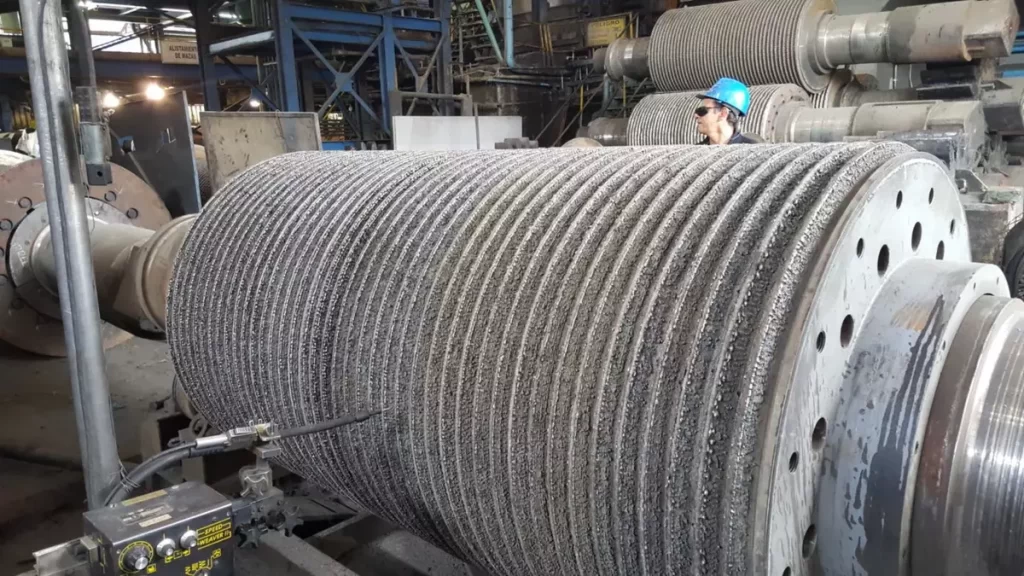
Most commonly, you should consider deposition rate, welding conditions, welding gear availability, hardfacing alloy composition, pre-heat and post-heat treatment required, availability of hardfacing consumables, size of welding consumable, and many more.
Knowing the fundamentals of each welding process can help you choose the cheapest one. However, sometimes it is not about going cheap. Oxy-fuel welding is among the most economical welding procedures, but it doesn’t offer good properties compared to welding arc procedures.
With a high deposition rate of 8 to 25 lbs per hour and low costs, submerged arc welding and flux-cored arc welding offer great properties to value ratio.
Submerged Arc Welding in Hardfacing
Submerged Arc Welding (SAW) is a joining process that involves the formation of an electric arc between a continuously fed tubular electrode and the workpiece. The arc is covered and protected by a blanket of powdered flux layer.
With high travel speed and deposition rates, SAW is a highly economical and suitable hardfacing method. In addition, SAW produces uniform and high-quality welds with great characteristics and strength.
The biggest advantages of submerged arc welding in hardfacing are the deep penetration, high deposition, and the fact it can be used in various conditions. However, the SAW equipment is somewhat bulkier, and it is not suitable for all sorts of hardfacing alloys.
Shielded Metal Arc Welding In Hardfacing
Stick welding (Shielded Metal Arc Welding) uses electricity to melt the filler metal rod or the electrode as it is properly referred to. The electrode is covered with a layer of flux. The flux melts due to the heat and serves as a protection for the weld pool, preventing it from being contaminated by the atmosphere.
The Shielded Metal Arc Welding in Hardfacing offers some unique properties, such as portability and versatility. As a result, the stick welding process can be used in remote locations, and powered by generators. However, with 3-5 lbs per hour, this method offers somewhat limited productivity.
Flux Cored Arc Welding In Hardfacing
The FCAW welding process uses a flux-cored wire as a filler material and welding electrode. The wire is hollow, tubular, and made of mild steel or stainless steel. The hollow core is filled with flux during the wire fabrication and then closed with a seam joint.
Even though flux-cored arc welding is not suitable for hardfacing various alloys and metals, it offers excellent penetration and a high deposition rate of 9-25 lbs per hour. In addition, just like SMAW, FCAW is highly portable, and it can be easily implemented into automatic welding processes.
Gas metal Arc Welding In Hardfacing
MIG or GMAW (Gas metal arc welding) is the simplest process to master. MIG welding is used by professionals and hobbyists. It requires a shielding gas and uses a wire feeding system to feed filler metal into the weld pool.
MIG welding in Hardfacing can be used both as a semi-automatic or automatic welding process. However, the base metal can be welded only into overhead or vertical welding positions. Nonetheless, with high deposition rates of 5-12 lbs per hour and low filler metal prices, this is quite an economical and suitable hardfacing welding method.
Chromium Carbide Hardfacing
Chromium carbide alloys contain high amounts of chromium (greater than 18 percent) and carbon (greater than 3 percent.) As a result, the abrasion resistance increases as the amount of carbon and chromium increases. A low friction coefficient also makes chromium carbide deposits suitable for applications that require a base metal with good slip.
Chromium carbides can contain other elements that can increase wear resistance in high-temperature applications. These alloys are limited to two or three layers.
Types Of Wear
To understand the importance of hardfacing and welding methods selection, you should first know the types of the wear parent metal is subjected to.
Even though different parts, equipment, or components of machines don’t fail only on a single type of wear, there are several different types.
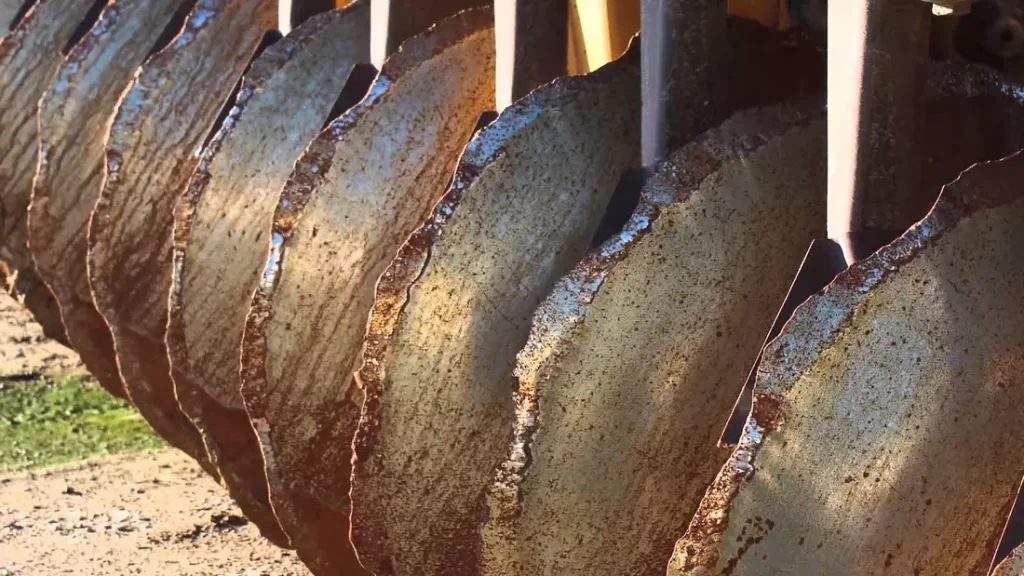
Abrasive wear occurs once an abrasive material, such as soil, coal, sand, glass, grains, and other minerals, slides across a metal service. Abrasion is responsible for 40 to 50% of all wear, but luckily, it can be prevented by various welding methods and hardfacing alloys.
Adhesive or metallic wear occurs when two or more metallic surfaces slide and move against each other. Adhesive wear occurs under pressure, and the frictional heat creates a micro welding condition. Even though this type is responsible for 10% of all wear, it still shouldn’t be disregarded.
Impact wear occurs when a particular object is hit by another object with force, impact, and percussion. This type is responsible for 20% of all wear, so the wear-resistant material should be layered to prevent parts from failing.
Corrosive wear is also known as chemical wear or oxidation. It’s usually caused by electrochemical and chemical reactions between both the environment and the surface. Determining the wear mode can be challenging and may require trial and error when you select hardfacing products.
Hardfacing Welding Applications
Due to economics and positive characteristics, hardfacing found its way into many different industries and applications. As you might have guessed, it is commonly used to restore and repair worn-out parts in harsh and heavy-duty applications and machines such as excavators, mining crushing rolls, etc.
As a result, hardfacing is widely used in industries such as:
- Mining and coal
- Sugarcane and food
- Coal and Mining Industry
- Power & Generation Industry
- Metal and Metalworking Industry
- Shipyard and Shipbuilding Industry
- Marine and Maritime Industry
- Cement
- Petrochemical
- Construction
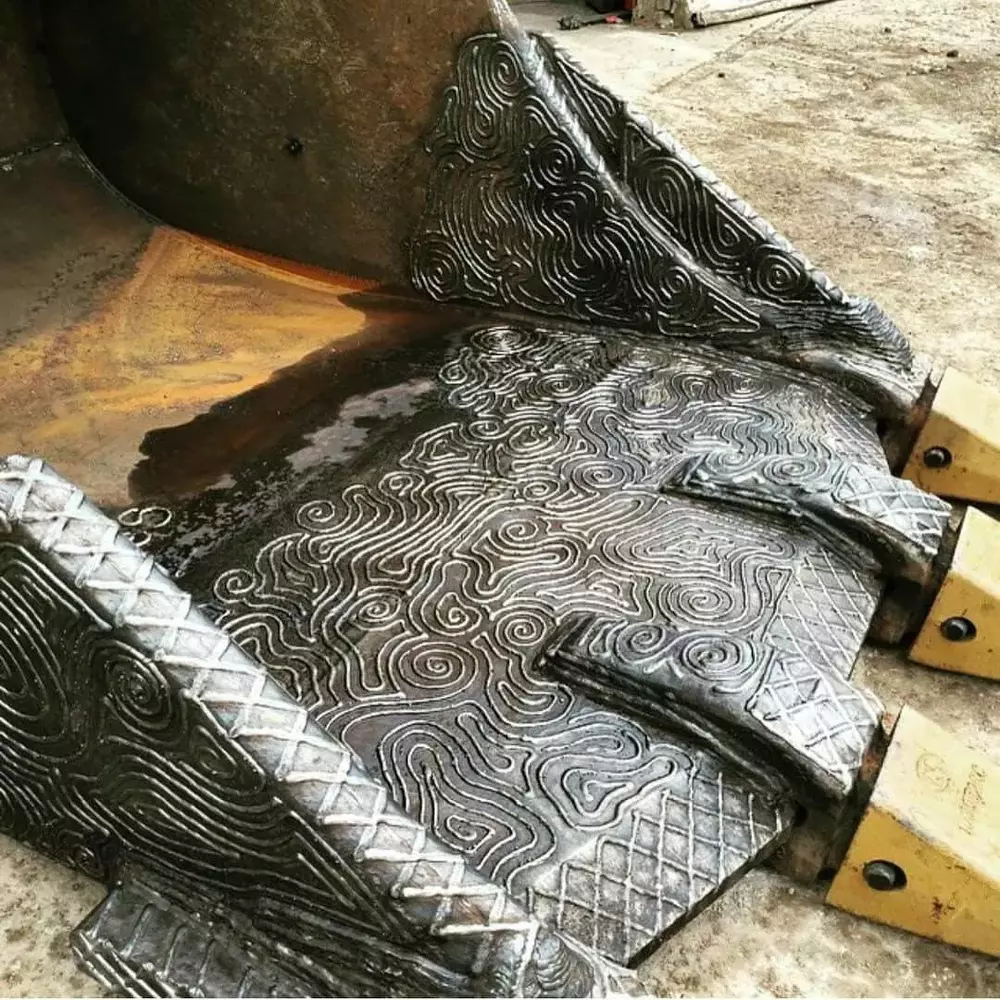
Resources:
- https://www.hardfacingfty.com/hardfacing-welding/
- https://www.thefabricator.com/thewelder/article/cuttingweldprep/frequently-asked-questions-about-hardfacing
- https://www.ifexport.com/hardfacing-what-is-it-and-how-to-do-it-right/
- https://www.hardfacetechnologies.com/resources/frequently-asked-questions
- https://www.twi-global.com/technical-knowledge/faqs/faq-what-is-hardfacing





